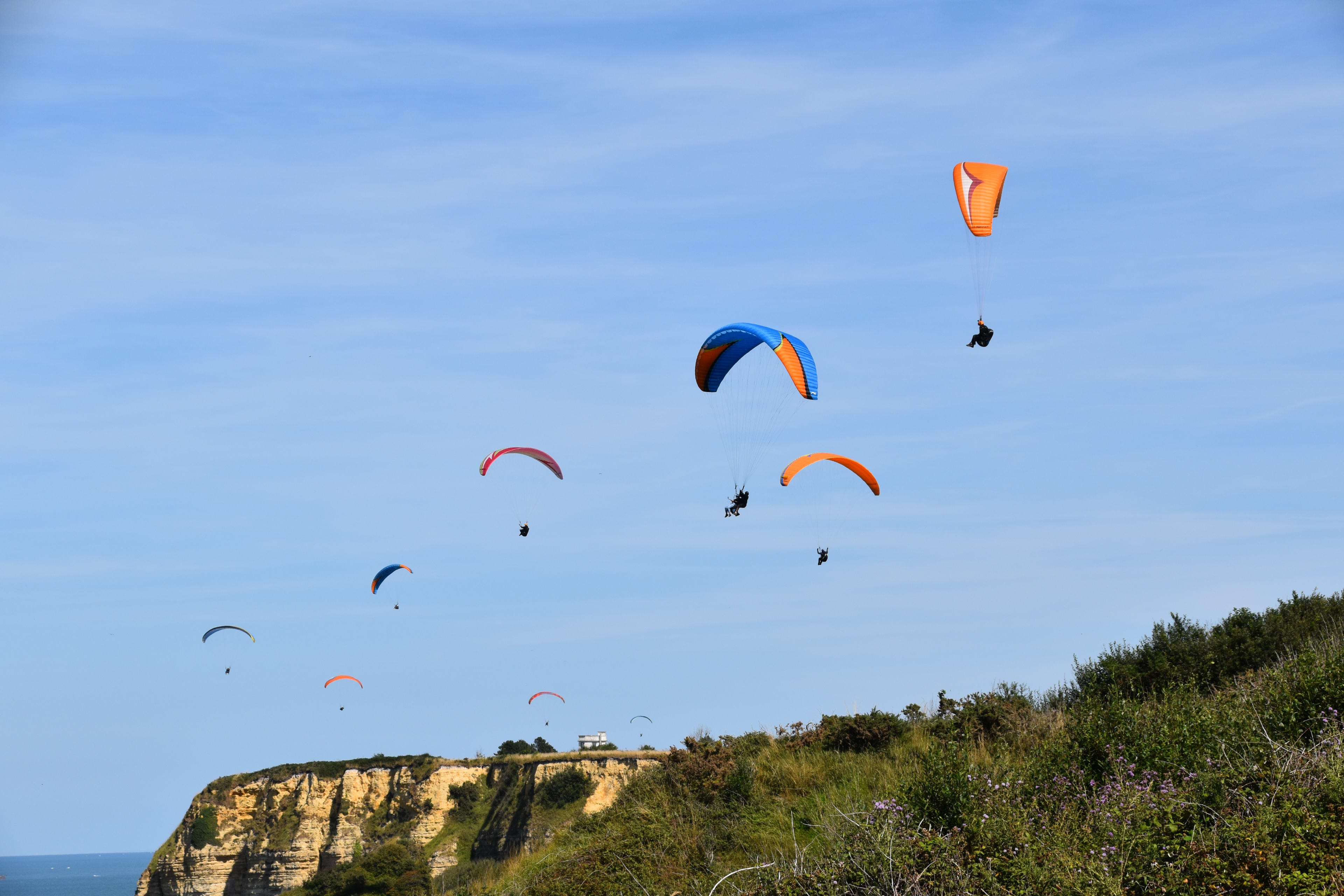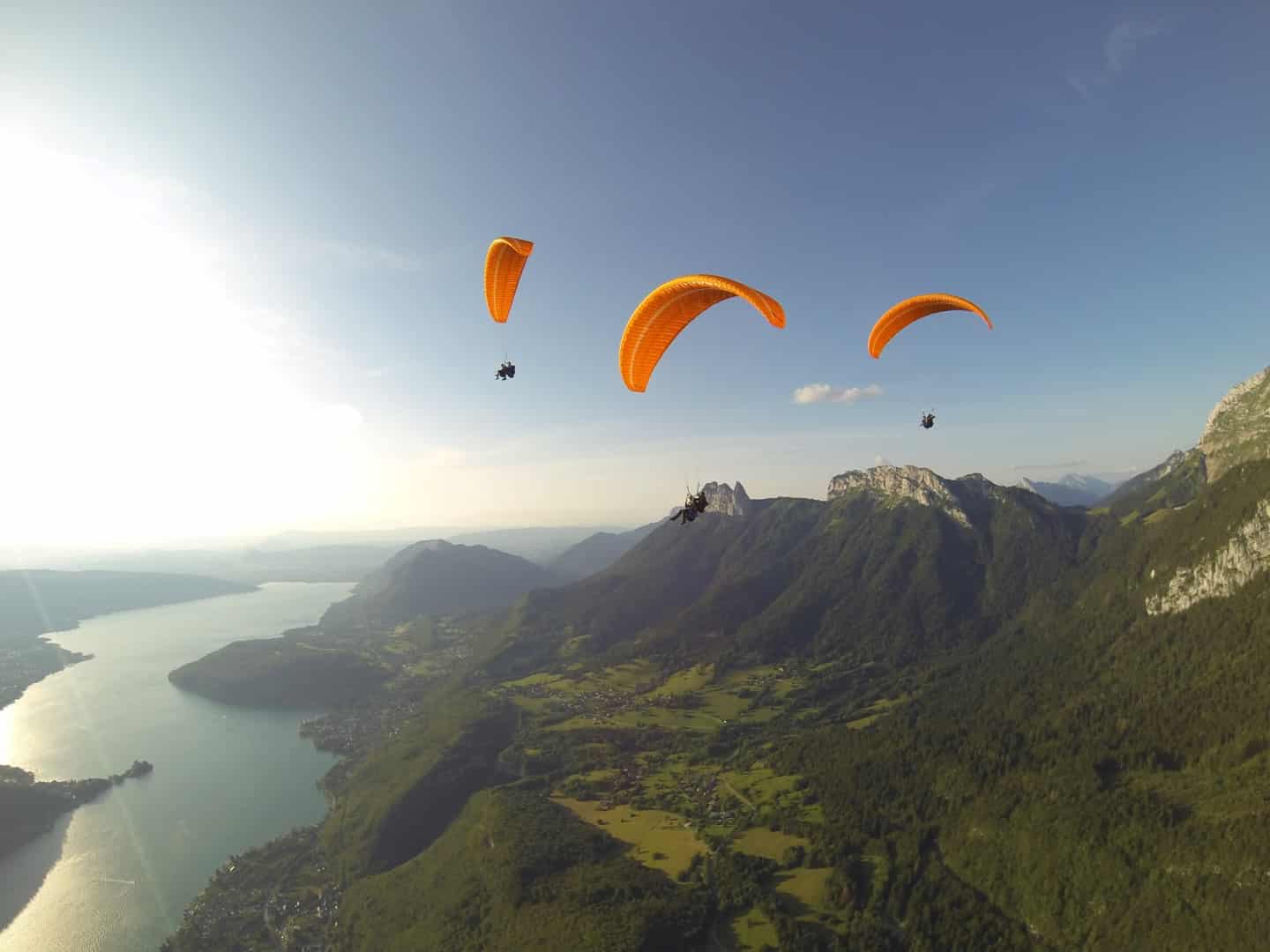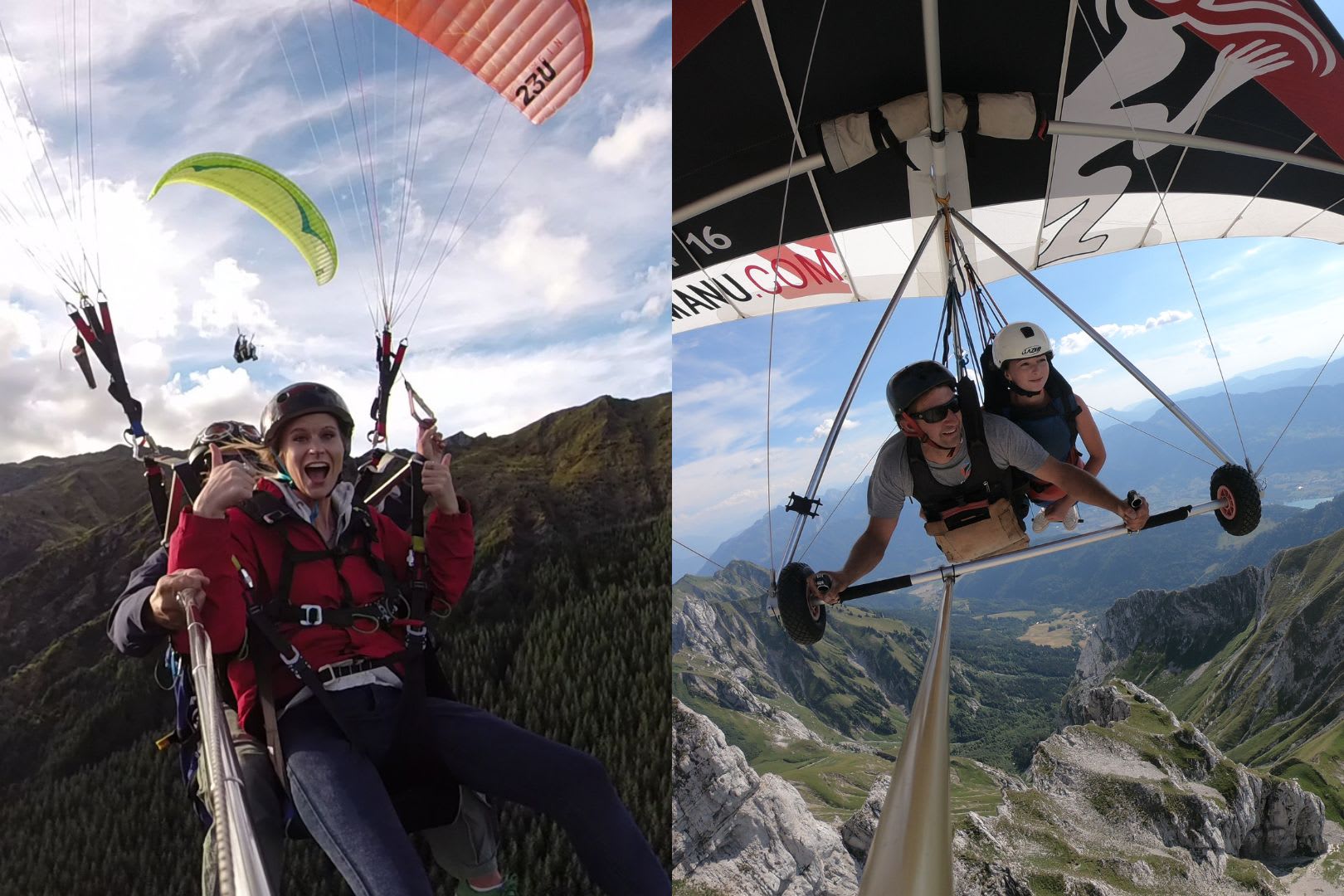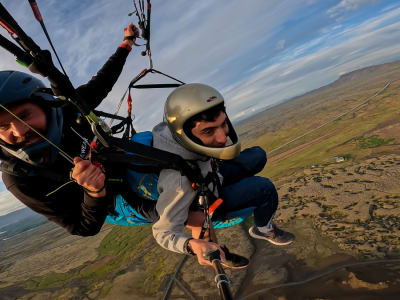
The best Paragliding activities
300 activities match your criteria

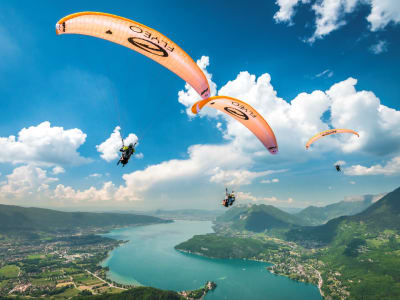
Tandem Paragliding Flight over Annecy's Lake

Tandem Paragliding Flight above Interlaken
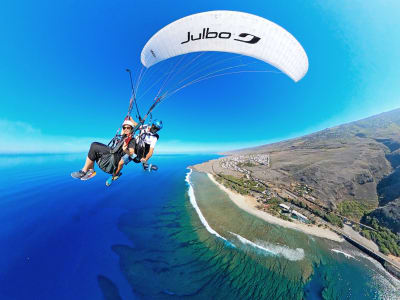
Tandem Paragliding Flight over the Lagoon of Saint-Leu, Reunion Island

Tandem paragliding near Las Canteras, Las Palmas de Gran Canaria
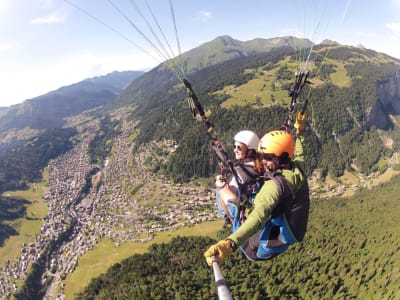
Tandem Paragliding Flight in Morzine, Portes du Soleil
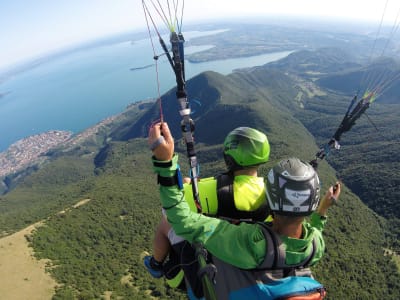
Tandem Paragliding Flight over Lake Garda from Monte Pizzocolo
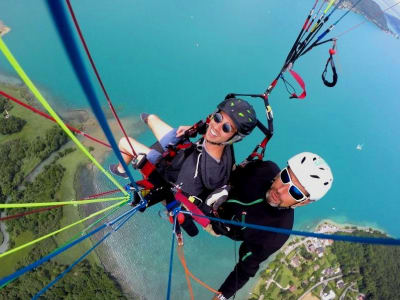
Tandem paragliding flight over Annecy
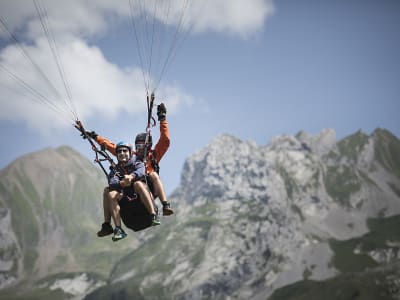
First paragliding experience in Le Grand-Bornand

Tandem Paragliding Flight in Albufeira, Algarve

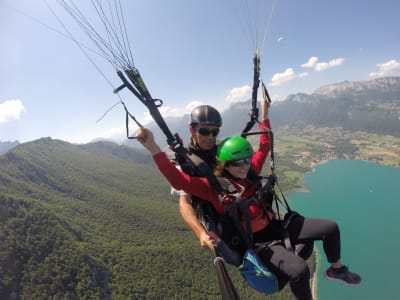
Tandem paragliding flight in Annecy

Tandem Paragliding Flight near Reykjavík

Tandem Paragliding Flight over Annecy's Lake

Tandem Paragliding Flight above Interlaken

Tandem Paragliding Flight over the Lagoon of Saint-Leu, Reunion Island

Tandem paragliding near Las Canteras, Las Palmas de Gran Canaria

Tandem Paragliding Flight in Morzine, Portes du Soleil

Tandem Paragliding Flight over Lake Garda from Monte Pizzocolo

Tandem paragliding flight over Annecy

First paragliding experience in Le Grand-Bornand

Tandem Paragliding Flight in Albufeira, Algarve

Tandem Paragliding over Lisbon

Tandem paragliding flight in Annecy
About Paragliding
What is Paragliding?
Quick introduction to the sport
Paragliding is an exhilarating adventure sport that allows you to soar through the skies with nothing but a parachute-like wing and the wind beneath you. Imagine gliding silently over stunning landscapes, feeling the rush of the wind on your face, and experiencing the sensation of free flight. Whether flying above mountains, valleys, or coastal cliffs, paragliding offers an unparalleled sense of freedom.
It’s a sport accessible to almost everyone, with tandem flights available for beginners and advanced lessons for those seeking to master the art of flight. For those who crave adventure and breathtaking views, paragliding is the ultimate outdoor experience.
History and Origin of Paragliding
The roots of paragliding can be traced back to the early 1960s, when American engineer and parachutist Domina Jalbert introduced a multi-cell wing with a controllable glide, laying the foundation for modern paragliding technology. Paragliding as we know it today, however, didn’t gain momentum until the 1980s, when the first purpose-built paragliders were created in France. Enthusiasts sought a new way to experience the thrill of flight, and paragliding quickly developed into a recognised sport.
Originally, the early paragliders were used by mountaineers who wanted a quicker way to descend after reaching a summit. As the technology improved, it became popular not only for its practicality but also for the unique experience it offered. Today, paragliding is enjoyed worldwide as both a recreational activity and a competitive sport, with international competitions drawing skilled pilots from all corners of the globe. The Fédération Aéronautique Internationale (FAI) now governs the competitive side of the sport, hosting events that challenge pilots’ speed, agility, and precision.
The Different Types of Paragliding
Tandem Paragliding:
This is the most popular form for beginners. In tandem paragliding, you are strapped into a harness with a professional instructor who controls the flight. It’s an ideal way for first-timers to experience the sensation of flight without the need for prior training. Tandem paragliding is available in many scenic locations, making it a great option for tourists.
Cross-Country (XC) Paragliding:
Cross-country paragliding involves long-distance flights, often covering dozens or even hundreds of kilometres. It requires advanced skills in thermalling, where pilots ride updrafts of warm air to gain altitude and glide from one thermal to the next. Cross-country paragliding is suited to experienced pilots who want to explore new terrains and push their limits.
Acrobatic Paragliding:
This form of paragliding is for the thrill-seekers. Acrobatic pilots perform dramatic spins, loops, and other aerial stunts. It’s a highly specialised discipline that requires years of training to perfect. While not for the faint of heart, acrobatic paragliding is an impressive spectacle to witness.
Paramotoring:
A variation of paragliding, paramotoring involves attaching a small engine to the back of the pilot. This engine powers the paraglider, allowing for longer, controlled flights without relying solely on thermal lifts or wind. Paramotoring opens up new possibilities for pilots who want to explore flat landscapes or fly when weather conditions are less favourable.
Hike and Fly:
A blend of mountaineering and paragliding, this type of paragliding involves hiking to a launch site with your equipment before taking off from the top. It’s perfect for those who enjoy a mix of physical challenge and the thrill of flight.
Essential Equipment for Paragliding
Paraglider (Wing):
The most important piece of equipment. The paraglider wing is made from lightweight fabric, typically ripstop nylon, with cells that fill with air to create lift. Modern wings are designed for stability, ease of control, and durability, with different models available for beginners, cross-country pilots, and acrobatic enthusiasts.
Harness:
The harness attaches the pilot to the wing via sturdy lines and straps. It’s designed for comfort and safety, often featuring a built-in back protector. For long flights, pilots may use a cocoon-style harness, which envelops their legs for better aerodynamics and warmth.
Helmet:
A must-have for safety, helmets protect the pilot’s head in case of rough landings or unexpected collisions during take-off or flight. Helmets should be lightweight and certified for air sports.
Reserve Parachute:
An essential safety device. In case of an emergency, such as wing collapse or malfunction, the pilot can deploy the reserve parachute to safely descend. Most paragliding harnesses have a compartment for storing the reserve parachute, which can be deployed quickly.
Variometer:
A flight instrument that measures vertical speed, indicating whether the pilot is climbing or descending. Variometers are crucial for cross-country paragliding, as they help pilots locate thermals and maximise their flight time.
Radio:
Used to communicate with instructors or other pilots, particularly in areas where coordination is needed for safety. Radios are essential in competition or cross-country flights to relay information about weather changes or flight paths.
Gloves and Sunglasses:
While not strictly essential, gloves protect your hands from cold and abrasion, while sunglasses shield your eyes from the sun and wind, ensuring you can see clearly during flight.
Best Paragliding Spots Around the World
Chamonix, France:
Nestled in the French Alps, Chamonix is a mecca for paragliders. Offering jaw-dropping views of Mont Blanc, it’s one of the best spots for both beginners and advanced flyers. The diverse conditions make it possible to enjoy tandem flights or more advanced cross-country experiences.
Oludeniz, Turkey:
Famous for its turquoise coastline and the iconic Blue Lagoon, Oludeniz is a top destination for paragliding. The combination of stable weather conditions and breathtaking scenery attracts pilots from all over the world.
Interlaken, Switzerland:
Surrounded by the Swiss Alps, Interlaken offers unrivalled alpine views. With its clear skies and strong thermals, it’s perfect for both beginner tandem flights and experienced pilots looking for longer flights.
Pokhara, Nepal:
Overlooking the Annapurna mountain range and Phewa Lake, Pokhara is a dream for paragliders. The unique thermal conditions and stunning landscape make it one of the most sought-after locations for cross-country paragliding.
Rio de Janeiro, Brazil:
Launching from Pedra Bonita and flying over the famous beaches of Ipanema and Copacabana, Rio offers a unique mix of urban and natural beauty. It’s one of the best city-based paragliding spots in the world.
Cape Town, South Africa:
With Table Mountain and Lion’s Head as a backdrop, Cape Town provides incredible coastal flights with views over the city and the Atlantic Ocean. Tandem flights here are popular with tourists looking for a thrilling way to see the sights.
Lake District, UK:
The rolling hills and picturesque lakes provide perfect conditions for paragliding in the UK. It’s accessible for beginners and offers stunning views of one of England’s most beautiful regions.
Annecy, France:
Known for its crystal-clear lake and stunning alpine views, Annecy is a premier paragliding destination in Europe. It’s ideal for beginners and seasoned pilots alike, with calm winds and incredible scenery.
Paragliding Terminology & Lexicon
Thermal: A column of rising warm air that pilots use to gain altitude.
Wing Loading: The ratio of a pilot’s weight to the surface area of the wing.
Glide Ratio: The distance a glider can travel forward for a certain loss of altitude.
Lift: The force that allows the paraglider to stay in the air.
Stall: When the wing loses lift, typically due to a loss of airflow.
The Benefits of Paragliding
Physical Fitness: Paragliding strengthens your core, improves balance, and requires stamina for carrying equipment to launch sites.
Mental Health: The sensation of flying helps reduce stress and anxiety, offering a sense of freedom and peace.
Connection with Nature: Paragliding allows you to experience nature from a unique perspective, soaring above landscapes and gaining a deep appreciation for the environment.
Adrenaline Rush: For thrill-seekers, the sheer excitement of gliding through the air provides an unforgettable experience.
Tips for Beginners
Choose the Right Instructor: Opt for certified instructors with good reviews. Manawa offers a range of qualified professionals across the globe.
Start with Tandem Flights: Tandem flights are the safest and easiest way to get a taste of paragliding without any prior experience.
Understand the Weather: Weather conditions are crucial for safe paragliding. Listen carefully to your instructor’s briefing and always respect their guidance.
Wear Proper Gear: Dress in layers, wear sturdy shoes, and ensure your harness is comfortable and secure. A good pair of gloves and sunglasses are also recommended
Embark on your paragliding adventure
Paragliding is more than just an adventure sport; it’s an opportunity to experience the world from a whole new perspective. Whether you're a novice eager to take your first tandem flight or an experienced pilot seeking thrilling cross-country challenges, paragliding offers something for everyone. With its rich history, diverse practice types, and stunning global destinations, this sport promises unforgettable moments and a deep connection with the skies.
At Manawa, we’re committed to helping you find the perfect paragliding experience. From top-notch equipment to expert instructors, we ensure that your journey into the skies is both safe and exhilarating. Explore our range of paragliding options today, and take the leap into one of the most thrilling outdoor activities available.
Feel free to explore, book, and embark on your paragliding adventure with confidence. The sky’s the limit!
